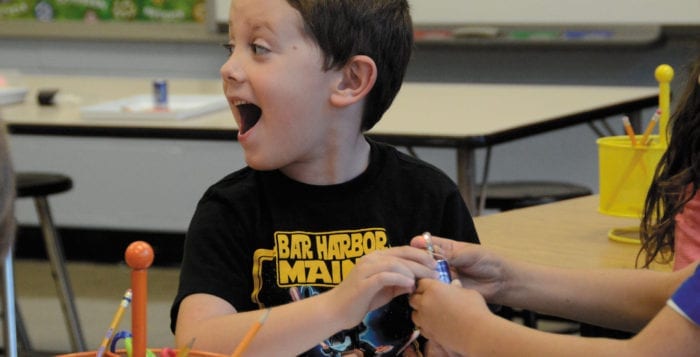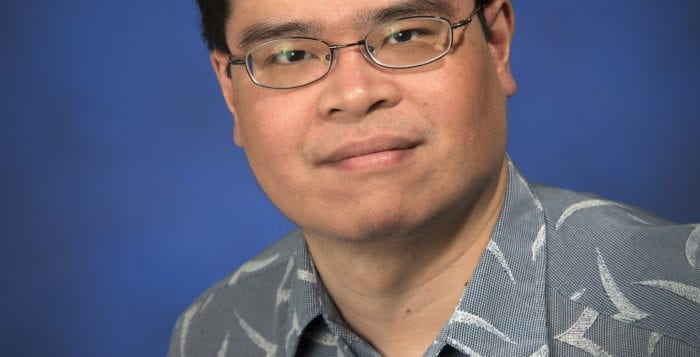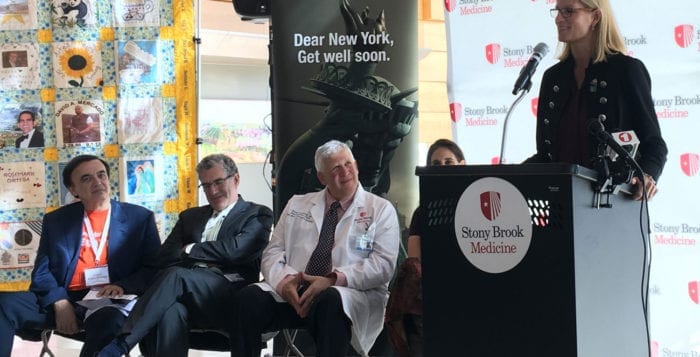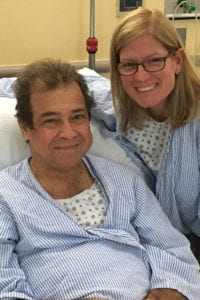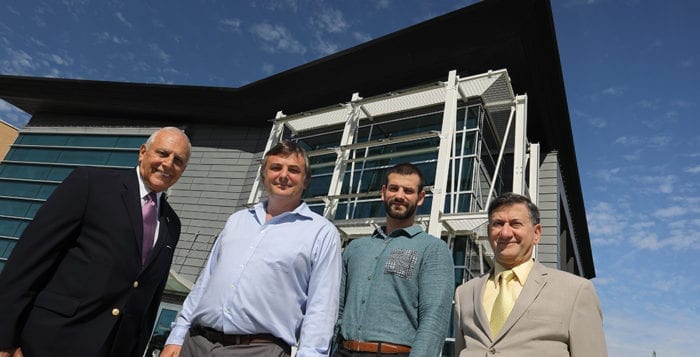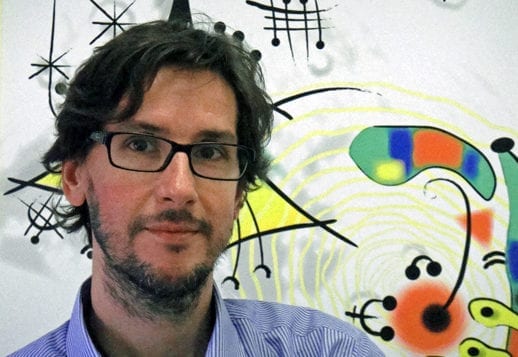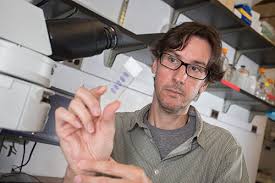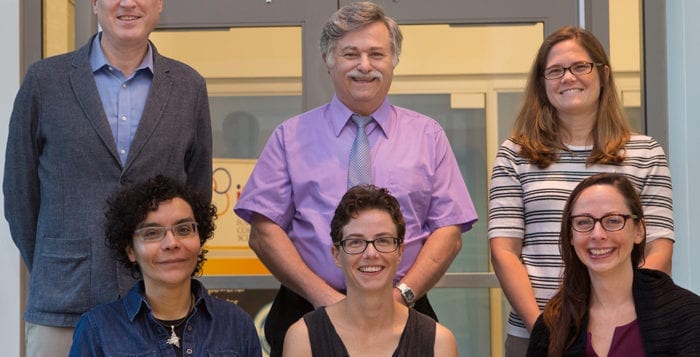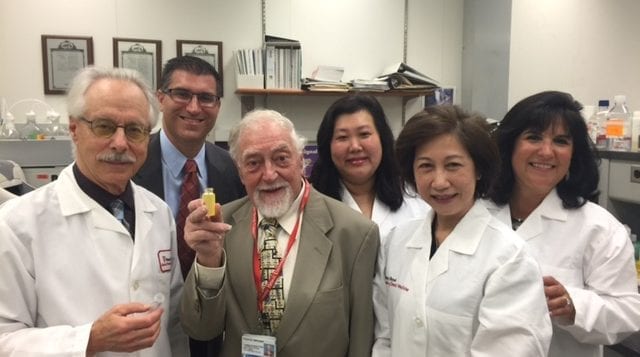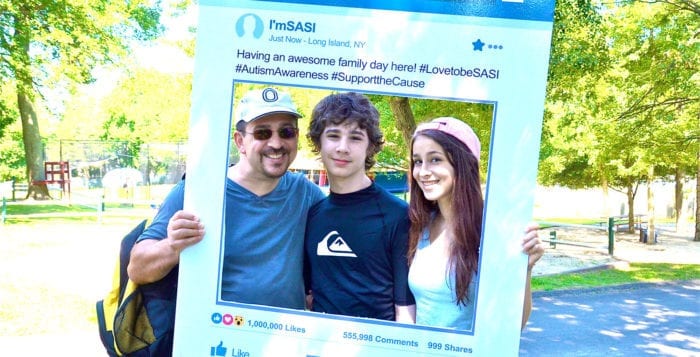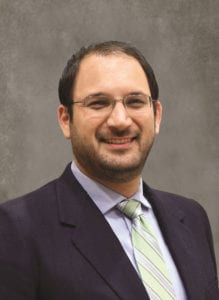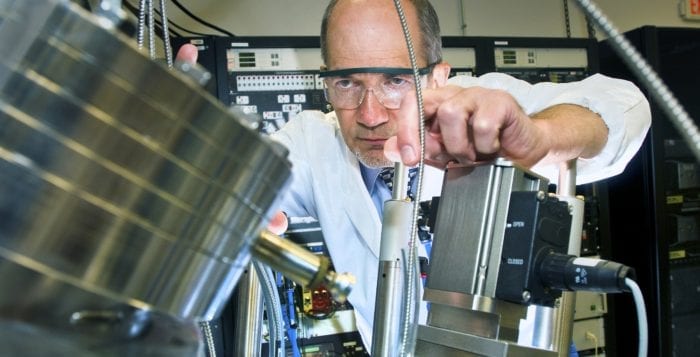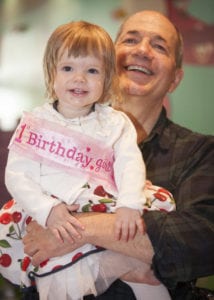By Rebecca Anzel
Second-graders in Andrew Muller Primary School’s new science room were beaming with excitement Monday as teachers distributed materials for an experiment — a magnet, paperclip, battery, copper wire, rubber band and lightbulb.
The class was learning about interactions. Debbie Trelfa helped her students name each of the items in front of them and asked them to figure out how to make them interact. One table discovered the magnet attracted the paperclip, and Trelfa told her students there was another interaction they could make.
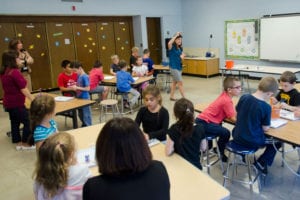
Students told one another to “persevere,” and a few minutes later another table discovered they could get the lightbulb to light up by placing it on the battery.
Miller Place school district’s two elementary schools, Andrew Muller and Laddie A. Decker Sound Beach School, adapted an available classroom each to be used as science learning and inquiry labs. Students study topics like weather and plants in an interactive way, as opposed to using textbooks.
“Having been a classroom teacher, I loved teaching science, but it’s very difficult to do in a classroom,” Andrew Muller Primary School Principal Laura Gewurz said. “Experimentation can be time consuming and complicated to set up and break down. Having a room designed for student experimentation and collaboration makes science exciting and accessible, and saves instructional time.”
These two spaces were instituted to prepare for new state science and engineering curriculum changes, which shift the focus of lessons from memorizing information presented by teachers to understanding concepts by investigating them. The updated standards are called Next Generation Science Standards, which use “three-dimensional learning.”
Instead of a teacher asking students a question with one correct answer, for example, students would instead consider an open-ended one by using evidence presented by a teacher or reading. Or, instead of students reading a textbook chapter and answering questions on a worksheet, they would read multiple sources and write reports and posters about the ideas.
“You’re seeing a lot more hands-on experiences, hearing a lot more student talk and witnessing more student collaboration.”
—Laura Gewurz
“New York State is really changing the curriculum for science, which I think is fantastic,” Gewurz said. “It has not been changed since 1996, and not only are our concepts about teaching different, the science is different.”
According to a NYS Education Department document, the proposed science learning standards will be presented to the Board of Regents this winter. It is the last step in a process that began in January 2015, when the board counseled the Education Department to begin drafting new standards. Since then, the draft was updated with results from a public survey and discussed in June 2016.
“As teachers, schools, and educational systems systemically transition to the new science standards and changes to local curriculum and instructional practice, a call for coherent professional development opportunities is vital,” the NYS Education Department said in a statement. “To this end, the Department will continue to collaborate with science education stakeholders across the state and nation to assist in building the awareness and the capacity of teachers and leaders of science.”
Miller Place is “way ahead of the game,” Assistant Superintendent Susan Hodun said, in beginning to implement science curriculum changes before the new state standards are finalized and implemented.
With cooperative learning tables for students to work with and learn from each other, separate storage areas for each grade level and science learning resources displayed, the new science labs further encourage modern teaching methods.

“I think it really works with the new science learning standards that New York State has developed in the sense that students have more access to authentic learning,” Gewurz said. “You’re seeing a lot more hands-on experiences, hearing a lot more student talk and witnessing more student collaboration. I think with the changes to science, it’s all coming together, which is great.”
The science room is also financially smart, she added, because instead of purchasing duplicates of materials for each classroom, the school can instead buy a wider range of materials to create a “much richer room.”
Students spend about an hour per week doing experiments that supplement the time they spend in the classroom learning about science concepts. The teachers and principal at Andrew Muller hope that hands-on experience will help their students as they get older.
“If you’re looking at college and career readiness, how would kids even know if they want to be an engineer unless they’ve had the opportunity to experiment,” Gewurz asked. “I think it’s certainly motivational and I think you will see more boys and girls interested in engineering in this country if you start to do things like this.”

